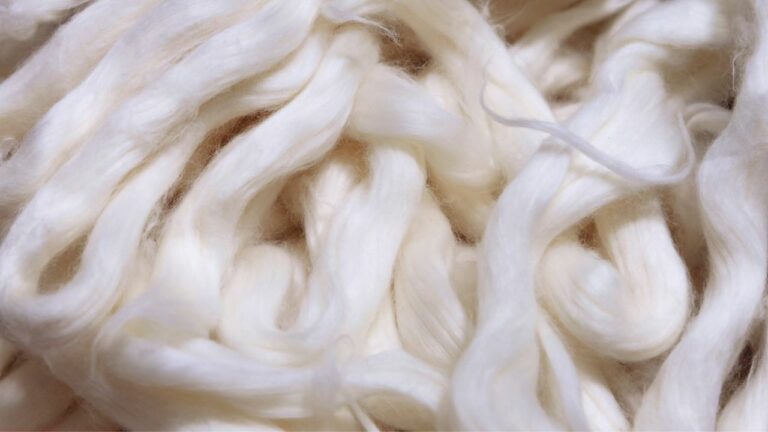Sustainable Dyes: The Ultimate Guide To Fashion Revolution
The fashion industry has long been associated with environmental concerns, particularly in the realm of textile dyeing. Traditional dyeing processes often rely on synthetic dyes that have a significant impact on the environment and human health. However, there is a growing movement towards sustainable dyes, which offer a more eco-friendly alternative.
Sustainable dyes are derived from natural sources such as plants, minerals, and even bacteria. These natural dyes not only reduce the use of toxic chemicals but also minimize water consumption and waste production. They provide vibrant colors without compromising on quality or performance.
We will delve into different methods and technologies used in sustainable dyeing processes, including foam dyeing and electrochemical dyeing. Furthermore, we will discuss certifications and standards that ensure the use of low-impact dyes throughout textile supply chains.

The Pros and Cons of Sustainable Dyes
Advantages of Sustainable Dyes
Sustainable dyes offer several benefits for both the environment and the fashion industry. Here are some advantages of using sustainable dyes:
- Low Environmental Impact: Sustainable dyes, such as natural dyes derived from plants or bacteria, have a lower impact on the planet compared to synthetic dyes. They are made from renewable resources, reducing the consumption of petrochemicals and minimizing water pollution.
- Healthier for People: Traditional dyeing processes often involve toxic chemicals that can harm both workers in textile mills and consumers who wear the dyed fabrics. In contrast, sustainable dyes use natural sources or non-toxic alternatives, making them safer for people.
- Reduced Water Usage: Conventional dyeing methods require significant amounts of water during the dyeing process, leading to high water consumption and wastewater pollution.
Sustainable Dyeing Methods in the Textile Industry
Sustainable dyeing methods are crucial for reducing the environmental impact of the textile industry. Let’s explore some innovative techniques that are being used to create vibrant colors while minimizing harm to the planet.
Foam Dyeing:
Foam dyeing is an eco-friendly alternative to conventional dyeing processes. Instead of immersing fabric in a large volume of water, foam dyeing uses foam as a carrier for the dye solution. This method significantly reduces water consumption and eliminates the need for toxic chemicals like bleach and mordants.
Continuous Dyeing:
Continuous dyeing is another sustainable method that offers several advantages. In this process, fabric passes through a series of rollers where it is continuously dyed. This method allows for better color coordination between different sections of the fabric, resulting in consistent and vibrant colors throughout the material.
Waterless Dyeing Methods: Dyecoo and Natural Dyeing
The fashion industry is notorious for its high water consumption and the environmental impact of synthetic dyes. However, there are innovative methods emerging that aim to address these issues. Two such methods are Dyecoo and natural dyeing.
Dyecoo
Dyecoo is a revolutionary technology that offers a waterless dyeing solution for textiles. Unlike traditional dyeing processes that require large amounts of water, Dyecoo uses foam dyeing technology. Foam, rather than liquid, is used as the medium to transport and apply the dye onto the fabric.
How does it work?
- The fabric is pre-treated with bleach to remove any impurities.
- The dyestuff is converted into foam form using heat.
- The foam is then applied to the fabric under pressure.
- Heat is used again to fix the dye onto the fabric.
Greener Ways to Color: Innovations in Sustainable Dyeing

Natural Dyes: A Colorful Alternative
Are natural dyes sustainable?
Natural dyes are a great option for those looking to color their fabrics in an eco-friendly way. These dyes are derived from plant sources, such as flowers, leaves, bark, and roots. Natural dyes are described as promising and sustainable alternative. They are sustainable alternative to synthetic dyes Using natural dyes not only reduces the environmental impact but also adds a unique touch of nature to your fabric.
Pros:
- Environmentally friendly: Natural dyes are biodegradable and do not release harmful chemicals into the environment.
- Wide range of colors: Despite misconceptions that natural dyes offer limited color options, they can produce a vibrant spectrum of hues.
- Safe for skin: Natural dyes are generally non-toxic and safe for contact with the skin.
Cons:
- Colorfastness: Some natural dyes may fade over time or when exposed to sunlight. Additional steps like mordanting can help improve colorfastness.
Creating Color from Agricultural & Herbal Waste
In the world of sustainable dyeing, finding alternative sources for creating vibrant colors is crucial. One innovative approach is utilizing agricultural and herbal waste to extract natural dyes. This not only reduces the reliance on toxic chemicals but also minimizes the environmental impact caused by traditional dyeing processes.
Collection of Agricultural & Herbal Waste
The first step in this process involves collecting agricultural and herbal waste from various industries such as food production and herbal manufacturing. These wastes include parts of plants that are typically discarded, such as stems, leaves, and peels. Instead of letting them go to waste, they can be transformed into valuable raw materials for dye production.
Extracting Color from Waste
Once the waste materials have been collected, they undergo a series of extraction processes to obtain the desired colors. Different methods like heat or chemical agents can be used to extract pigments from these natural sources.
Sustainable Dye Brands
In the world of sustainable fashion, brands are constantly seeking ways to reduce their environmental impact. One area that has garnered attention is the use of dyes in textile production. Traditional synthetic dyes often contain harmful chemicals that can pollute the planet’s air and surface waters. As a result, many brands are turning to eco-friendly alternatives, such as sustainable dyes.
Sustainable Dyes for a Better Planet
One brand leading the way in sustainable dye innovation is Earthcolors®. Their revolutionary product, Diresul® Earthcolors® dyes, offer a solution that combines quality and eco-consciousness. These dyes are derived from agricultural and herbal waste, transforming what would otherwise be discarded into vibrant colorants for textiles.
The Importance of Sustainable Dyeing
Why should outdoor brands consider incorporating sustainable dyes into their collections? Firstly, it aligns with their commitment to protecting the environment.
Earthcolors®: Nature’s Influence on Fashion

Environmentally Friendly Dyes for a Sustainable Fashion Industry
The fashion industry has a significant impact on the environment, from the production of fabric materials to the manufacturing and disposal of clothing. One area where the industry can make a positive change is in the use of sustainable dyes. Earthcolors®, developed by Archroma, is an innovative range of dyes that are sourced from natural materials and have a lower carbon footprint compared to traditional synthetic dyes.
Bringing Vibrant Colors to Life without Harming the Planet
Earthcolors® offer a wide variety of shades that can be used in fashion brands and outdoor apparel. These dyes are derived from agricultural waste, such as nut shells, almond shells, rosemary leaves, or saw palmetto berries. By utilizing these natural sources, Earthcolors® reduce reliance on petrochemicals and contribute to a more eco-friendly approach in the fashion industry.
Startups and Innovations in Sustainable Dyeing

Technology Revolutionizing the Dyeing Process
In the world of fashion, sustainability is becoming increasingly important. One area that has seen significant innovation is sustainable dyeing. Startups and companies are developing new technologies to create low-impact dyes that reduce harm to the environment while still producing vibrant colors for fabrics.
One such technology is pad batch dyeing, which uses a patented process to minimize water and energy consumption during the dyeing process. This innovative method allows for better control over color absorption, resulting in less waste and more efficient use of resources. By implementing this technology, textile manufacturers can significantly reduce their environmental impact without compromising on quality.
Certification: Ensuring Sustainable Practices
Certifications play a crucial role in promoting sustainable dyeing practices. They provide assurance to consumers that the dyes used in their clothing have been produced using environmentally friendly methods.
Waterless Technologies: Dyecoo and Natural Dyeing
Water is a precious resource, and the textile industry consumes vast amounts of it in the dyeing process. However, there are innovative technologies and methods that aim to reduce water usage while still achieving vibrant and sustainable colors. Two notable approaches in this regard are Dyecoo and natural dyeing.
Dyecoo: A Low Impact Solution
Dyecoo is a revolutionary technology that eliminates the need for water in the dyeing process. Instead of using water as a medium, this system employs supercritical carbon dioxide (CO2) to carry the dyestuff into the fabric fibers. This method offers several advantages:
- Reduced Water Consumption: By eliminating water usage altogether, Dyecoo significantly reduces the environmental impact associated with traditional dyeing processes. It conserves millions of liters of water annually.
- Energy Efficiency: Dyecoo offers energy efficiency benefits by reducing water consumption and eliminating the need for water heating. This not only reduces the carbon footprint and operational costs but also makes it an economically sustainable solution for textile manufacturers.
Gravity Lab: Innovations in Sustainable Dyeing
In the world of fashion, finding ways to create vibrant and colorful garments while minimizing the environmental impact is a top priority. One area where significant progress has been made is in sustainable dyeing techniques. Let’s explore some exciting innovations in sustainable dyeing that are being developed at Gravity Lab.
Capsule Collection
Gravity Lab has introduced a revolutionary concept called the “Capsule Collection.” This collection consists of garments made from low-impact fibers, which are fabrics that have been produced using environmentally friendly methods. By using these fibers, Gravity Lab ensures that their clothing not only looks stylish but also minimizes harm to the planet.
Low Impact Dyes
One key aspect of sustainable dyeing is the use of low impact dyes. These dyes are designed to minimize water consumption and reduce the release of harmful chemicals into the environment.
Stoney Creek Colors: A Sustainable Dye Solution
Stoney Creek Colors offers a sustainable dye solution that provides remarkable results while minimizing harm to our waterways. Let’s take a closer look at how their innovative approach is making a positive impact.
Solution: Sustainable Dyes for a Greener Future
Stoney Creek Colors has developed a range of sustainable dyes that are eco-friendly and safe for the environment. Unlike traditional synthetic dyes, which often contain harmful chemicals and pollutants, Stoney Creek Colors’ dyes are derived from natural sources such as plants and insects. By using these sustainable alternatives, we can reduce the negative impact on our ecosystems and create a greener future.
Result: Vibrant Colors without Compromising Sustainability
One might question whether sustainable dyes can produce vibrant colors comparable to their synthetic counterparts. The answer is yes! Stoney Creek Colors has mastered the art of creating rich, vibrant hues using their sustainable dyeing methods.
Certified Environmental Benefits
Stoney Creek Colors uses a patented technology to produce sustainable dyes that have low impact on the environment. This innovative approach has earned them several certifications, highlighting the environmental benefits of their products.
TEX Certification: Ensuring Quality and Sustainability
One of the certifications that Stoney Creek Colors has received is TEX certification. This certification ensures that their dyes meet stringent environmental standards throughout the production process. It guarantees that their dyes are made using sustainable practices, minimizing harm to the environment.
Reduced Emissions: A Positive Impact on Air Quality
The use of Stoney Creek Colors’ sustainable dyes also contributes to reduced emissions. Traditional dyeing processes often release harmful chemicals into the air, contributing to air pollution and negative health effects. However, Stoney Creek Colors’ patented technology significantly reduces these emissions, making it a more environmentally friendly choice.
Low Impact Dyes vs. Conventional Synthetic Dyes

Impact on the Environment and Health
Low impact dyes are a more sustainable alternative to conventional synthetic dyes. Unlike their counterparts, low impact dyes do not contain harmful chemicals that can pollute the environment or pose risks to human health. The dyeing process using conventional synthetic dyes often involves the use of toxic chemicals such as petrochemicals and bleach, which can have adverse effects on both the planet and people.
On the other hand, low impact dyes are made from natural sources such as plants, bacteria, or natural waste materials. These dyes are eco-friendly and do not contribute to water pollution or harm ecosystems when disposed of after use. They also have a lower carbon footprint compared to conventional synthetic dyes, as they require less energy and water consumption during the dyeing process.
Advantages of Low Impact Dyes
There are several advantages to using low impact dyes in the fashion industry:
- Environmentally friendly: Low impact dyes are designed to minimize their impact on the environment. They are typically made from natural or plant-based materials, reducing the use of harmful chemicals and pollutants that can harm ecosystems and wildlife.
- Non-toxic: Unlike conventional dyes that contain heavy metals and other toxic chemicals, low impact dyes are non-toxic. This means that they are safer for workers in the textile industry and for consumers who wear clothes dyed with these dyes. It also reduces the risk of skin allergies and irritations.
- Reduced water usage: Low impact dyes require less water during the dyeing process compared to traditional dyes. This is because they have higher absorption rates, meaning they can achieve vibrant colors with less water. This not only conserves water resources but also reduces the need for energy-intensive processes such as water heating and wastewater treatment.
- Energy efficient: The production of low impact dyes requires less energy compared to conventional dyes. This is because they are often made from natural or plant-based materials that do not require extensive chemical processing. By using less energy, low impact dyes contribute to reducing greenhouse gas emissions and combating climate change.
- Less waste generated: Low impact dyes produce less waste during the dyeing process. This is because they have higher color yield, meaning less dye is needed to achieve the desired color intensity. Additionally, any leftover dye can often be safely disposed of or recycled, minimizing environmental pollution.
- Better for human health: Low impact dyes do not contain harmful chemicals that can pose risks to human health. This is particularly important for textile workers who are exposed to dyes on a daily basis. By using low impact dyes, the textile industry can protect the health and well-being of its workers.
- Improved color fastness: Low impact dyes are known for their excellent color fastness. This means that the colors remain vibrant and do not fade easily, even after multiple washes
- Compatible with sustainable and organic textiles
Low Impact Dyes vs. Natural Dyes for Clothing
While low impact dyes and natural dyes are both sustainable options for coloring clothing, they differ in terms of their production methods and environmental impact. Let’s explore the pros and cons of each:
Low Impact Dyes
- Low impact dyes are synthetic dyes that have been developed to minimize their environmental footprint during the dyeing process.
- These dyes use less water, energy, and chemicals compared to conventional synthetic dyes, making them a more eco-friendly option.
- They have a lower risk of toxicity as they do not contain harmful chemicals such as azo dyes or heavy metals like lead.
- The low impact dyeing process also produces less waste and pollution, reducing the strain on our planet’s resources.
Natural Dyes
- Natural dyes are derived from plant sources such as roots, leaves, bark, and flowers. They have been used for centuries to color textiles.
- Natural dyes offer a wide range of vibrant colors for textiles. The use of plant sources such as roots, leaves, bark, and flowers to create natural dyes has been a practice for centuries. These dyes are not only environmentally friendly but also provide unique and beautiful hues that are not easily replicated by synthetic dyes.
- One popular natural dye is indigo, which is derived from the leaves of the indigofera tinctoria plant. This dye produces a deep blue color that has been used for centuries in various cultures. Another commonly used natural dye is turmeric, which is made from the roots of the turmeric plant. Turmeric dye creates a warm yellow shade that is often used in traditional Indian textiles.
- Madder root is another plant source that is used to create natural dyes. This root produces a range of colors, from light pinks to deep reds, depending on the mordant used during the dyeing process. Other plant sources commonly used for natural dyes include onion skins, which produce a range of warm earthy tones, and marigold flowers, which create vibrant yellows and oranges.
- One of the advantages of using natural dyes is that they can be easily sourced and cultivated. Many of the plant sources used for natural dyes can be grown in home gardens or sourced locally, making them a sustainable option for dyeing textiles. Additionally, natural dyes often have a softer and more organic appearance compared to synthetic dyes, giving textiles a unique and natural aesthetic.
- While natural dyes offer many benefits, they do have some limitations. One challenge with natural dyes is their colorfastness. Some natural dyes may fade or change color over time, especially when exposed to sunlight or harsh washing conditions. However, advancements in natural dyeing techniques and the use of natural mordants can help improve the colorfastness of these dyes.
- One challenge with natural dyes is their colorfastness, as they may fade or change color over time, especially when exposed to sunlight or harsh washing conditions. However, advancements in natural dyeing techniques and the use of natural mordants can help improve the colorfastness of these dyes.
Challenges in the Textile Industry’s Dyeing Methods

Toxic Chemicals in the Dyeing Process
The dyeing process used in textile mills often involves the use of toxic chemicals. These chemicals can be harmful to both human health and the environment. Cotton, a commonly used fabric, is particularly susceptible to these toxic dyes. The traditional dye technology relies on chemical solutions that are applied to fabrics during the dye application process.
Problems with Traditional Dyeing Methods
One of the main problems with traditional dyeing methods is their potential toxicity. The chemicals used in these processes can have adverse effects on workers who handle them regularly. Moreover, when these toxic dyes are washed off during garment care, they can find their way into water bodies, polluting them and harming aquatic life.
The Need for Sustainable Dyes
Given these challenges, there is a growing need for sustainable dyes in the textile industry.
Petrochemicals and Emissions in Dye Production
Textile dyeing plays a significant role in the fashion industry, as it adds vibrant colors to our clothes. However, the conventional dyeing methods often involve the use of toxic chemicals and petrochemicals, which have detrimental effects on both the environment and human health.
Harmful Chemicals and Water Pollution
The use of synthetic dyes in textile dyeing processes introduces harmful chemicals into our waterways and biogenic colourants in the terxtile. These toxic substances can contaminate rivers, lakes, and oceans, leading to water pollution. The release of these chemicals not only affects aquatic life but also poses risks to human health when consumed through food consumption or direct contact with contaminated water sources.
High Carbon Footprint and Emissions
The production of synthetic dyes relies heavily on petrochemicals, resulting in high carbon emissions. Petrochemical-based dyes contribute to greenhouse gas emissions during their manufacturing process.
Pollution Concerns in Dyeing Processes
Textile dyeing processes have long been associated with pollution concerns due to the use of toxic chemicals and the release of harmful substances into the environment. These processes involve various methods such as exhaust dyeing, pad batch dyeing, continuous dyeing, and foam dyeing.
One major issue with conventional dyeing practices is the use of synthetic dyes that contain toxic chemicals. When these dyes are applied to textile materials, they can leach into waterways and contribute to water pollution. The toxicity of these dyes poses a risk not only to the environment but also to people who come into contact with them.
To address these problems, there has been a growing interest in sustainable dyes that are eco-friendly and have a lower impact on the planet. Natural dyes derived from plants, herbs, and other natural sources offer an alternative to synthetic dyes.
The Problem with Dyes: Environmental Impact
Dyes play a significant role in the fashion industry, adding vibrant colors to our clothing and textiles. However, the process of dyeing fabrics comes with its own set of environmental challenges. Let’s explore the environmental impact of dyes and why sustainable alternatives are crucial for a greener future.
Toxic Chemicals and Water Pollution
Conventional synthetic dyes often contain toxic chemicals that pose a risk to both the environment and human health. Azo dyes, for example, can release carcinogenic substances when they come into contact with water or sweat. These toxic dyes find their way into waterways through wastewater discharge from textile mills, leading to water pollution and harming aquatic life.
High Water Consumption
The dyeing process requires a significant amount of water. From pre-treatment to rinsing, large volumes of water are used throughout the various stages. This excessive water usage contributes to water scarcity issues in many regions around the world.
Embracing a Sustainable Future with Dyes
The fashion industry has long been associated with vibrant colors and eye-catching designs. However, the conventional dyeing process used to achieve these vibrant hues often comes at a significant cost to the environment. The excessive water usage, toxic chemicals, and high carbon footprint associated with synthetic dyes have raised concerns about the sustainability of the fashion industry.
Low Impact Dyes: A Step Towards Sustainability
To address these environmental concerns, many brands are now turning to sustainable dyes as an alternative to traditional synthetic dyes. These low impact dyes offer a more eco-friendly approach to textile dyeing, minimizing the harmful effects on both the planet and people.
Natural Dyes: Harnessing the Power of Nature
One popular type of sustainable dye is natural dye derived from plant-based sources such as roots, leaves, and flowers. By harnessing the power of nature, natural dyes provide a renewable and biodegradable option for coloring fabrics.
Understanding Sustainable Textile Dyes
The process of dyeing fabrics plays a crucial role in creating vibrant colors and unique designs. However, traditional dyeing methods often involve the use of toxic chemicals that harm both the environment and people. This is where sustainable textile dyes come into play, offering an eco-friendly alternative that minimizes the impact on our planet.
Tex Certification: Ensuring Environmentally Friendly Dyes
Tex certification is a recognized standard in the textile industry that ensures sustainable practices are followed during the dyeing process. By obtaining this certification, brands can demonstrate their commitment to using low-impact dyes and reducing water consumption, waste generation, and emissions. This allows consumers to make informed choices when purchasing clothing from certified brands.
Natural Dyes: Harnessing Colors from Nature
One way to achieve sustainability in textile dyeing is by using natural dyes sourced from plants, minerals, or even bacteria.
Questioning Claims of “Sustainable Dyes”
In the world of fashion, sustainable practices have become increasingly important. One area that has garnered attention is the dyeing process, with many brands claiming to use “sustainable dyes.” However, it’s essential to question these claims and understand the true impact of dyeing on the environment and people.
Impact of Dyes on the Environment
Traditional textile dyeing methods often involve the use of synthetic dyes that can have a detrimental impact on the planet. These dyes are typically made from petrochemicals and can release toxic chemicals into waterways during the dyeing process. This contributes to water pollution and harms aquatic life.
On the other hand, natural dyes derived from plant sources may seem like a more eco-friendly alternative. While they do offer some benefits such as being biodegradable and non-toxic, their production requires large amounts of water, land, and energy.
Protecting the Planet and Its People: Toxins in Dyes
Textile dyeing plays a significant role in the fashion industry, adding vibrant colors to our clothing and fabrics. However, many conventional dyes used in the dyeing process contain harmful chemicals that can have detrimental effects on both the environment and human health. Let’s explore the impact of toxic dyes and the need for sustainable alternatives.
Toxic Chemicals in Conventional Dyes
Conventional synthetic dyes often contain toxic chemicals such as azo dyes, which pose a risk to both humans and the environment. These toxic dyes release harmful substances into waterways during their production and when garments are washed, leading to water pollution. The release of these toxins not only affects aquatic life but also poses potential risks to human health when we wear these dyed clothes.
The Environmental Impact of Toxic Dyes
The dyeing process itself contributes to environmental degradation through excessive water usage, energy consumption, and waste generation.
Sustainable Dye Alternatives: Examples and Benefits
In the fashion industry, textile dyeing plays a crucial role in creating vibrant colors and unique designs. However, conventional dyeing processes often involve the use of toxic chemicals and excessive water consumption, resulting in significant environmental impact. To address this issue, sustainable dye alternatives have emerged as a more eco-friendly option. Let’s explore some examples and the benefits they offer.
Natural Dyes: Embracing Nature’s Colors
- Natural dyes are derived from plant sources such as roots, leaves, flowers, and bark.
- They offer a wide range of colors while minimizing harm to the environment.
- These dyes can be used for both natural fibers like cotton and synthetic fibers like polyester.
- Some popular natural dyes include indigo (derived from the indigofera plant), turmeric (from turmeric root), and cochineal (from insects).
Non-Toxic Sustainable Dyes: What to Look For
One crucial aspect to consider is the use of non-toxic and eco-friendly dyes. The fashion industry heavily relies on dyeing processes to add color and vibrancy to textiles and garments. However, conventional dyeing methods often involve the use of harmful chemicals that can have a detrimental impact on both the environment and people’s health.
Low Impact Dyes: A Safer Choice for Our Planet
One alternative to toxic synthetic dyes is the use of low impact dyes. These dyes are made from natural sources such as plants, minerals, or even bacteria. Unlike traditional synthetic dyes that require large amounts of water and release toxic chemicals into waterways, low impact dyes are designed to minimize their environmental footprint throughout the dyeing process.
The Work Ahead: Advancing Sustainable Dyes
As the fashion industry becomes more aware of its environmental impact, there is a growing need to find sustainable alternatives to traditional dyeing methods. Sustainable dyes can help reduce the harmful effects of dyeing on the planet and improve the overall sustainability of the fashion industry.
Natural Dyes: A Step Towards Sustainability
One way to advance sustainable dyeing practices is by utilizing natural dyes derived from plants, insects, and minerals. These dyes are often extracted using environmentally friendly methods that minimize water usage and waste production. By opting for natural dyes, fashion brands can reduce their reliance on toxic chemicals present in synthetic dyes while also supporting local communities engaged in herbal industries.
Embracing a Sustainable Future with Dyes
The completed sections before the conclusion shed light on various aspects of sustainable dyes, highlighting their pros and cons, innovative dyeing methods, and the environmental impact of conventional synthetic dyes. By exploring waterless dyeing technologies like Dyecoo and natural dyeing methods, it becomes evident that greener alternatives are available to reduce water consumption and pollution in the textile industry. Furthermore, the use of agricultural and herbal waste as sources for creating color showcases the potential for circular economy practices in dye production.
Innovative startups such as Stoney Creek Colors have also emerged with sustainable dye solutions that prioritize environmental benefits without compromising on quality or performance. However, challenges persist in ensuring widespread adoption of sustainable dyes, including concerns over toxins in traditional dyes and claims of “sustainable” without proper certification. Moving forward, it is crucial to continue advancing sustainable dye technologies while promoting transparency and accountability within the industry.
To contribute to a more sustainable future, individuals can educate themselves about different types of sustainable dyes and make informed choices when purchasing clothing. Supporting brands that prioritize eco-friendly practices can drive positive change in the textile industry. By embracing sustainable dyes, we can protect our planet’s resources and work towards a more environmentally conscious fashion industry.
Some Facts About Sustainable Dyes: Is Conscious Color Possible?
- ✅ Textile dyeing has a significant ecological impact due to the large amounts of water, energy, and chemicals involved. (Source: Team Research)
- ✅ The term “sustainable” can be misleading, as it does not necessarily mean eco-friendly. (Source: Team Research)
- ✅ Some sustainable dyes still require chemical processes and may have negative environmental consequences. (Source: Team Research)
- ✅ Natural dyes are a more environmentally friendly alternative to synthetic dyes. (Source: earthpiece.in)
- ✅ Sustainable dyeing technologies, such as waterless dyeing and using bacteria for natural pigments, are emerging to address the environmental issues in the textile industry. (Source: Plug and Play)
FAQs
Are sustainable dyes as effective as conventional synthetic dyes?
Sustainable dyes have come a long way in terms of effectiveness and performance. While they may not offer an exact replica of every shade achievable with conventional synthetic dyes, advancements in technology have enabled sustainable alternatives to produce vibrant colors that meet high-quality standards.
How can I identify clothing made with sustainable dyes?
Look for certifications such as GOTS (Global Organic Textile Standard) or Oeko-Tex Standard 100 when shopping for clothing made with sustainable dyes. These labels ensure that strict criteria regarding environmental and social responsibility have been met throughout the production process.
Are sustainable dyes safe for production and the environment?
Answer: Sustainable dyes aim to minimize environmental impact by using natural or low-impact materials and reducing water and energy consumption. However, some sustainable dyes may still require chemical processes and have negative environmental consequences. It’s important to research and choose dyes that are certified safe and eco-friendly.
How are fragmented supply chains affecting sustainable dyeing practices?
Answer: Fragmented supply chains in the textile industry make it difficult for governments to regulate the use of chemicals by agents. Lack of transparency and disclosure of ingredients by chemical suppliers pose challenges to ensuring the safety and environmental commitment of dyes. Innovations and partnerships are crucial for transforming dyeing practices and driving sustainable fashion innovation.
What are the advantages of using natural plant or vegetable dyes?
Answer: Natural plant or vegetable dyes offer a sustainable and conscious choice for fashion-conscious individuals. These dyes are obtained from renewable sources, conserve natural resources, and consume less water. They also have antimicrobial properties, making them safer for children and useful in hospital settings against bacteria. However, when using natural dye, they may require the use of mordants to improve color fastness.
How do waterless technologies contribute to sustainable dyeing?
Answer: Waterless technologies, such as ColorZen and AirDye, reduce water usage, energy consumption, and chemical usage in the dyeing process. DyeCoo utilizes a closed-loop process with CO₂ for continuous dyeing and exhaust dyeing of textiles, eliminating the need for water and minimizing chemical waste. These technologies are part of sustainable fabric practices that aim to minimize the impact on the ecosystem and reduce wasteful practices.
Are synthetic dyes harmful to human health and the environment?
Answer: Synthetic dyes used in conventional industrial dyeing can contain toxic chemicals, some of which are not regulated. They contribute to water pollution, and the chemicals used in finishing processes can be harmful to aquatic life and humans. It’s essential to choose dyes that are certified safe and eco-friendly, such as bluesign approved synthetic dyes or natural dyes with non-toxic properties.
How can natural pigments from microbes contribute to sustainable dyeing?
Answer: Researchers are exploring the use of bacteria, such as Streptomyces coelicolor, to create natural pigments for dyeing textiles. This sustainable textile material innovation offers a renewable and biodegradable alternative to petrochemical dyestuffs, sourced from natural sources. Utilizing the power of plants and microbes, natural pigments provide vibrant hues, UV absorption, and a sustainable source of color.







